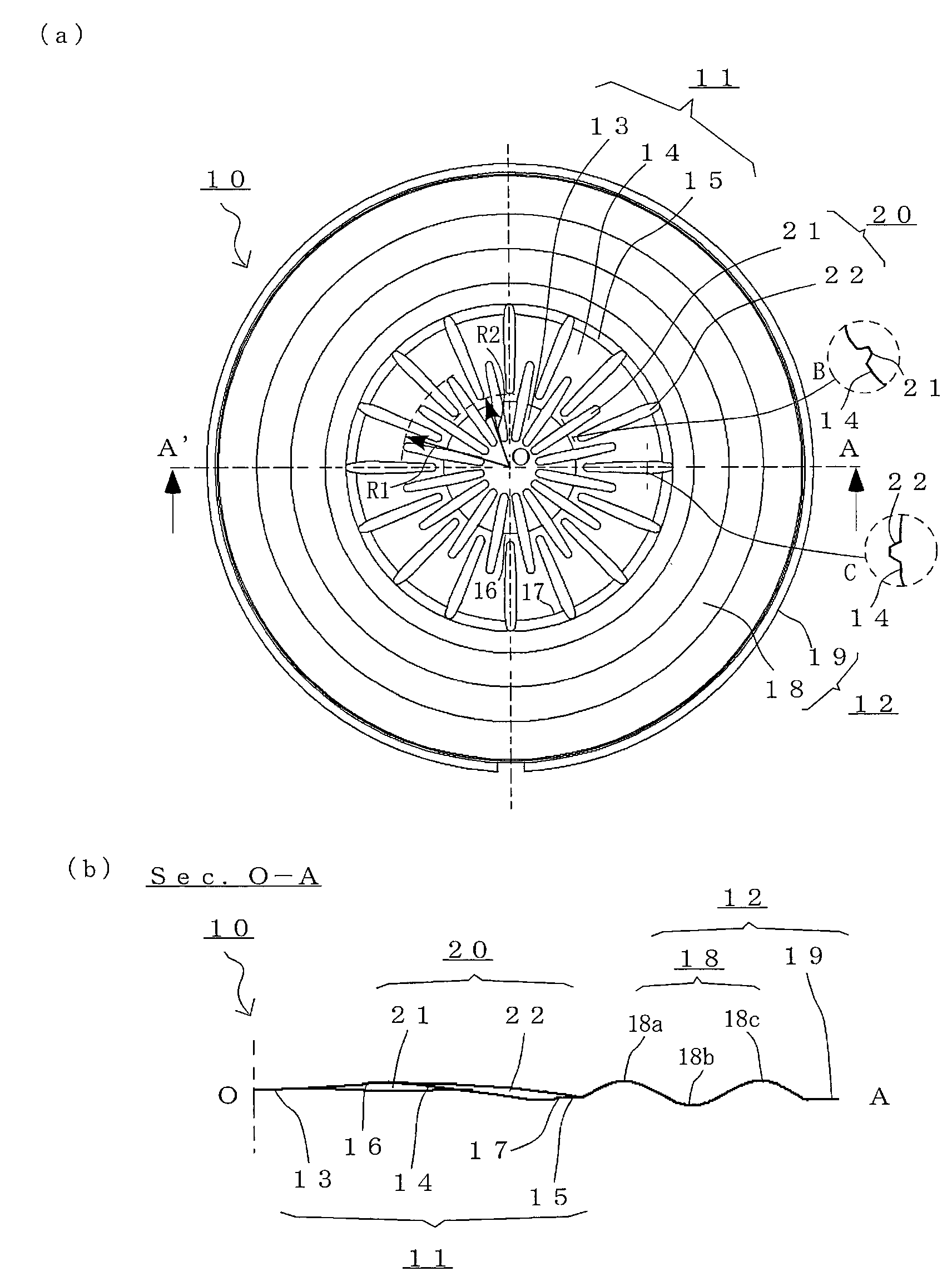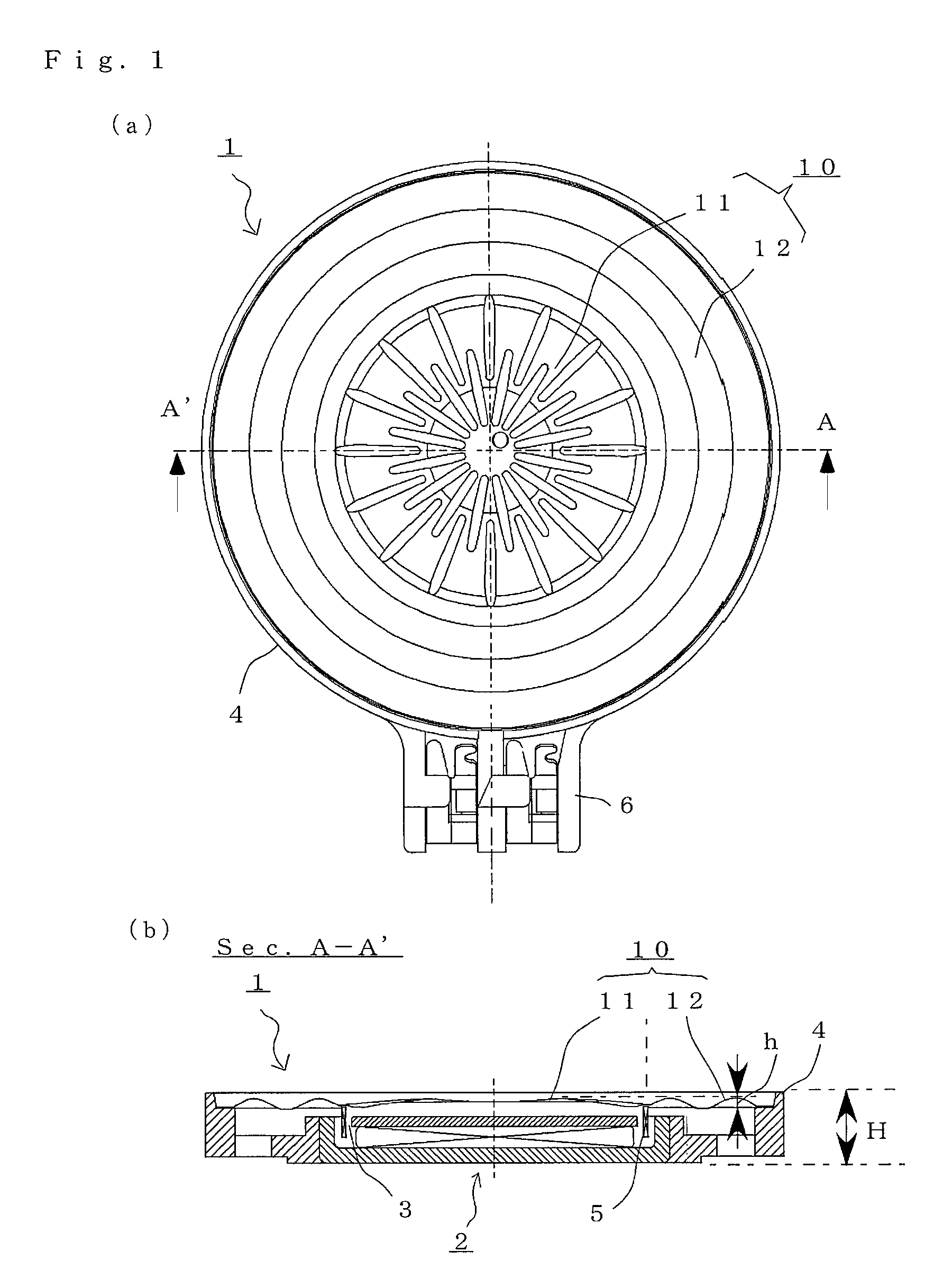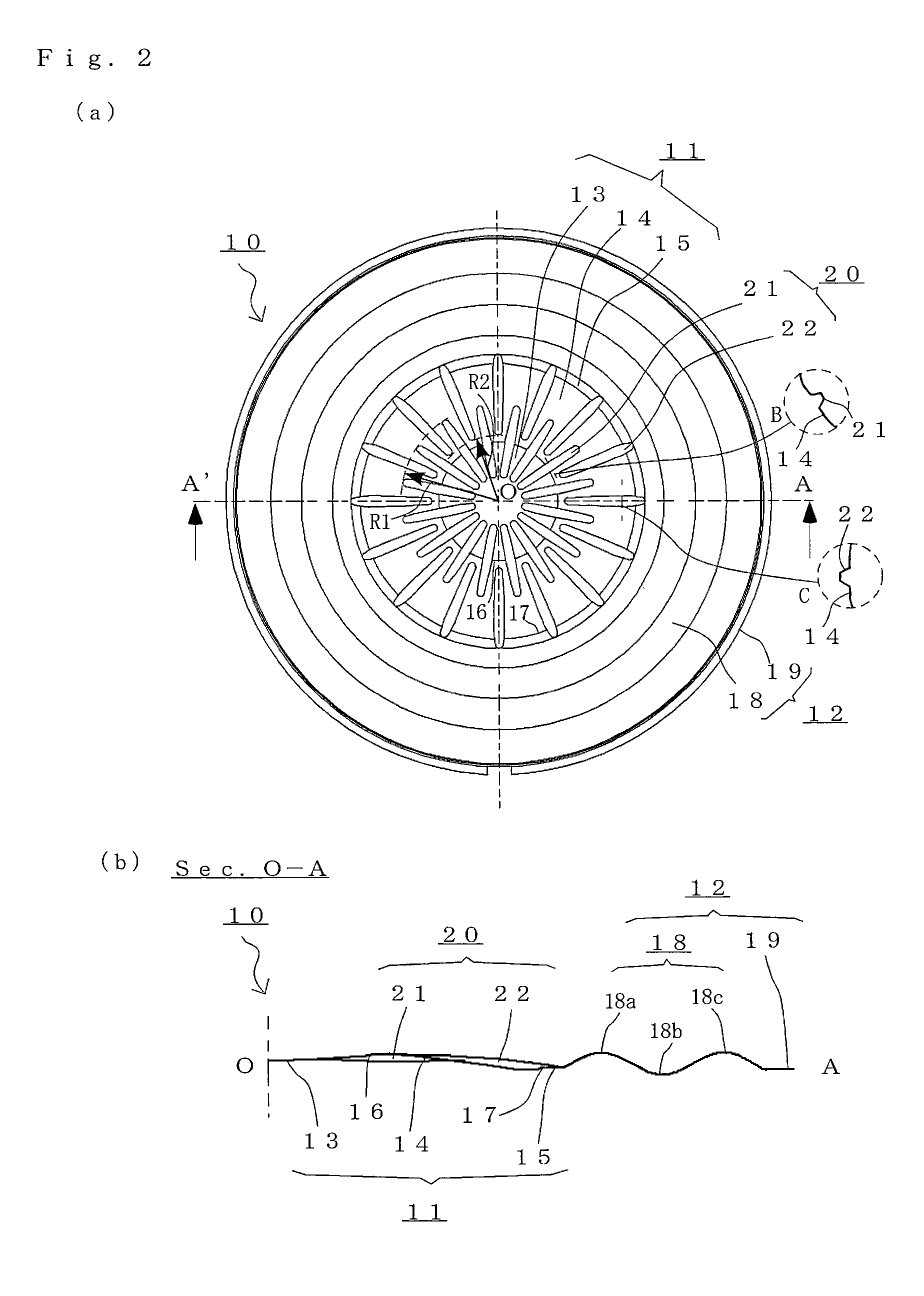Loudspeaker diaphragm and loudspeaker using the same
a technology of loudspeaker and diaphragm, which is applied in the direction of transducer diaphragm, transducer details, instruments, etc., can solve the problems of the loudspeaker, and insufficient rigidity of the conventional loudspeaker diaphragm, etc., to suppress the overall height of the loudspeaker diaphragm, increase the rigidity of the dome portion
- Summary
- Abstract
- Description
- Claims
- Application Information
AI Technical Summary
Benefits of technology
Problems solved by technology
Method used
Image
Examples
embodiment 1
[0026]FIGS. 1A and 1B illustrate a loudspeaker 1 using a loudspeaker diaphragm 10 in a preferred embodiment of the present invention. FIG. 1A is a plan view of the loudspeaker 1, and FIG. 1B is a side cross-sectional view thereof taken along line A-A′. The loudspeaker 1 of the present embodiment is a small and thin electrodynamic loudspeaker having a diameter of 20 mm, and includes a light-weighted magnetic circuit 2 of an inner-magnet type, and the loudspeaker diaphragm 10. The loudspeaker diaphragm 10 is obtained by molding a PEI (polyetherimide) resin film member, and is a single-piece member including a dome portion 11 and an edge portion 12.
[0027]In addition to the magnetic circuit 2 formed by a pole, a magnet and a yoke and defining a magnetic gap 3 therein, the loudspeaker 1 also includes a frame 4 attached to the magnetic circuit 2 for supporting the loudspeaker diaphragm 10 so as to allow vibrations of the loudspeaker diaphragm 10, and a voice coil 5 attached to the rear su...
PUM
 Login to View More
Login to View More Abstract
Description
Claims
Application Information
 Login to View More
Login to View More - R&D
- Intellectual Property
- Life Sciences
- Materials
- Tech Scout
- Unparalleled Data Quality
- Higher Quality Content
- 60% Fewer Hallucinations
Browse by: Latest US Patents, China's latest patents, Technical Efficacy Thesaurus, Application Domain, Technology Topic, Popular Technical Reports.
© 2025 PatSnap. All rights reserved.Legal|Privacy policy|Modern Slavery Act Transparency Statement|Sitemap|About US| Contact US: help@patsnap.com



